How to Track CapEx & OpEx Labor Costs Using ClickTime
Table of Contents
Properly accounting for the capitalization of labor costs is a critical aspect of financial operations. It involves tracking the amount of time and resources spent on various activities, and determining which can be capitalized and which must be expensed.
While this may sound straightforward, tracking these costs can be challenging for Finance and Operation teams. That’s because every business has a unique approach to labor cost capitalization. To track these expenditures in their preferred manner, it is crucial to have a flexible time-tracking solution.
ClickTime is a time, expense, and resource management solution designed to cater to the varying needs of businesses. Our highly-customizable solution allows you to accurately track capital and operational expenditures in a variety of ways.
In this article, we will discuss how one of our largest clients uses ClickTime to track its CapEx and OpEx labor costs. We aim to provide insights into how businesses can leverage ClickTime’s features to create customized tracking systems. This article is not meant to be a one-size-fits-all solution to tracking capital expenditures. Our goal is to provide practical guidance that can help Finance and Operations teams optimize their tracking processes.
Choose an Object to Classify Your Expenditures
Allocate expenditures on the Person, Project, or Task level.

In ClickTime, time entries are attributed to multiple objects, such as a Person, an Initiative, a Project, and a Task. To indicate whether time entries are CapEx or OpEx, ClickTime allows users to create custom fields on each object.
There are pros and cons to classifying expenditures on any one level, so many of our clients choose to create custom fields on each level. These custom fields remain hidden for end-users, which helps keep their timesheets simple and intuitive.
The following section will explore the benefits of adding CapEx/OpEx custom fields on three of our objects.
Classify Expenditures on the “Person” Level
Set targets for each employee’s capitalizable activities.
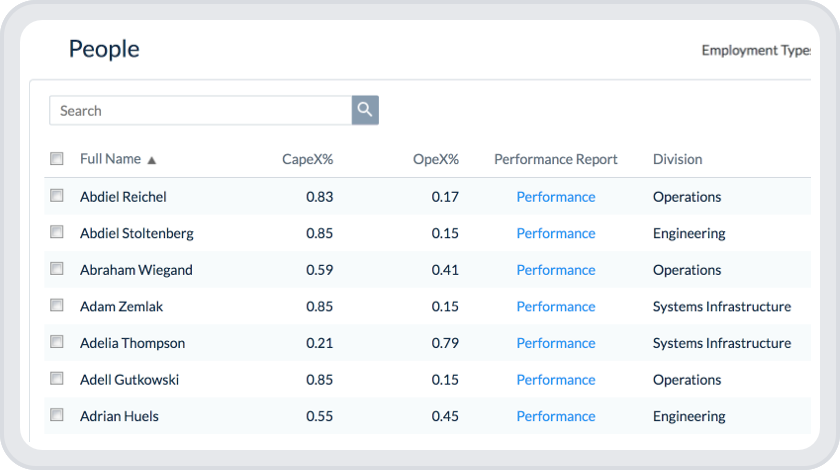
Some ClickTime clients choose to classify expenditures on the Person object. In this scenario, we create “multipliers” for each person – the percentage of time that an employee spends on Capitalizable or Operational work. For example, you may determine that a certain employee or role ought to spend 85% of their time on capitalizable activities, and 15% of their time on operational activities. ClickTime allows you to determine those distributions upfront, so all labor hours logged by that employee receive that split.
Classifying expenditures on the Person object provides teams with a target they hope to achieve. It allows your finance team to forecast capital expenditures and monitor the accuracy of their forecasts as time elapses.
While this method of classification is helpful for planning, it is also imprecise. For example, your finance team may forecast that an employee’s labor will be 90% capitalizable, but that employee only ends up working on capitalizable activities 70% of the time. To document actuals, you’ll also need to classify expenditures on the Project or Task level.
Classify Expenditures on the “Project” Level
Get a general sense of capitalizable labor costs.
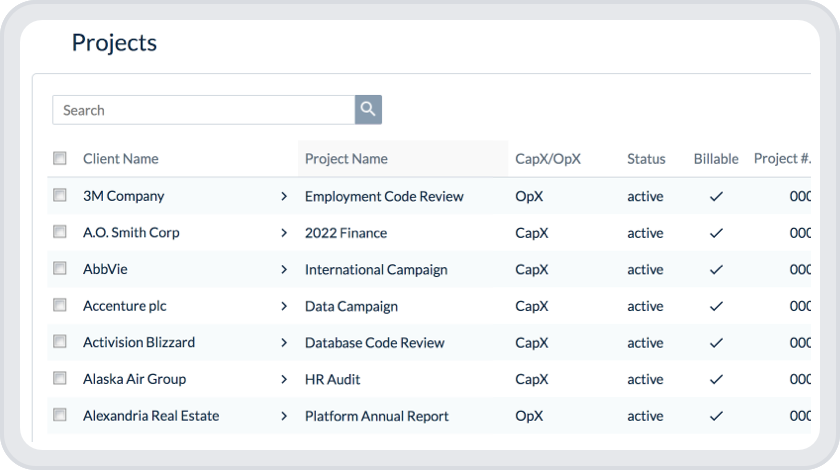
Many ClickTime clients choose to classify expenditures on the Project level. This methodology provides greater accuracy than Person-level classification, as it shows finance teams their actual labor expenditures instead of estimates .
This classification method is also relatively easy to implement from an administrative standpoint. By broadly stating which projects are capitalizable, administrators don’t need to classify each task within the project. However, the downside is that some projects may not be fully capitalizable, as they contain activities or phases that must be expensed.
Overall, classifying expenditures on the Project level is great for organizations whose entire projects are capitalizable, or for finance teams who only need a broad sense of their capitalizable labor costs.
Classify Expenditures on the “Task” Level
Accurately classify your labor expenditures.
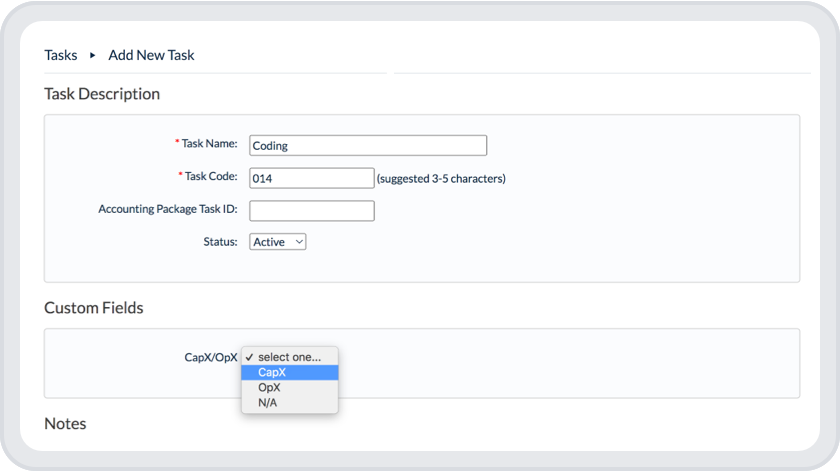
Classifying expenditures on the Task level provides the most granular, accurate documentation for your CapEx & OpEx needs. This methodology allows you to determine which tasks are capitalizable within an overarching project, and which must be expensed.
The only downside to this methodology is that system administrators must spend time classifying each task within a project. Luckily, with ClickTime’s ability to quickly duplicate past projects and their associated tasks, our system greatly reduces this administrative burden.
For Finance and Operations teams who want the most detailed view into their labor’s CapEx and OpEx activities, classifying expenditures on the Task level is the way to go.
Classify Expenditures on All Three Levels
Receive the benefits of each configuration.
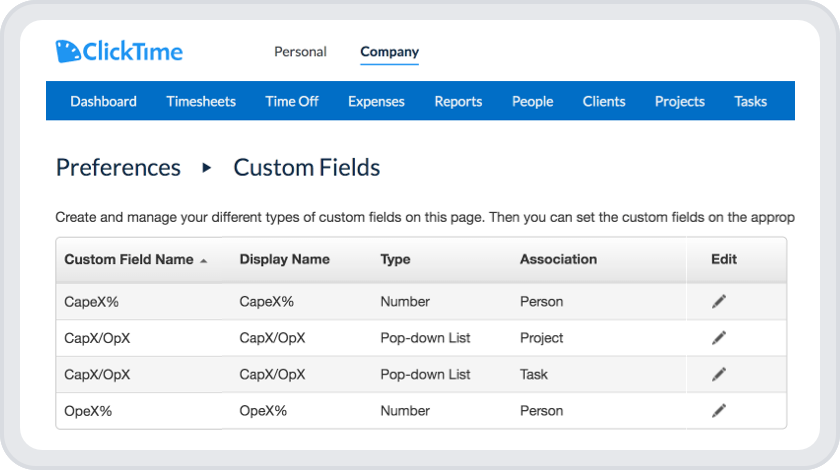
Unlike other time trackers with limited configuration capabilities, ClickTime allows you to classify your expenditures on multiple levels. This way, you can gain the advantages that each option brings:
- Set employee targets and document your forecasts.
- Quickly identify which projects are capitalizable for back-of-the-envelope math.
- Classify each task for detailed and accurate documentation.
No matter what configuration works best for your organization, our platform has the flexibility to accommodate your ideal processes.
Create Your Ideal CapEx/OpEx Reports
See what percentage of employee labor costs are capitalizable.

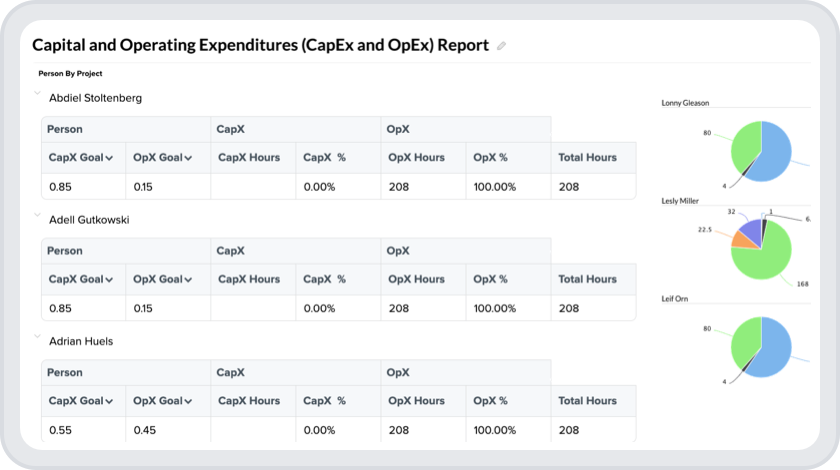
ClickTime is the only time-tracking tool that offers clients an all-in-one Business Intelligence and Analytics tool in its platform. Our BI Tool’s robust reporting capabilities enable clients to analyze targets vs. actuals, track the number of hours spent on CapEx or OpEx activities, identify the percentage of each employee’s labor costs that are capitalizable, and more.
With this information, finance teams can generate total CapEx & OpEx costs by combining ClickTime’s data with employee cost data.
Provide Audit-Proof Documentation
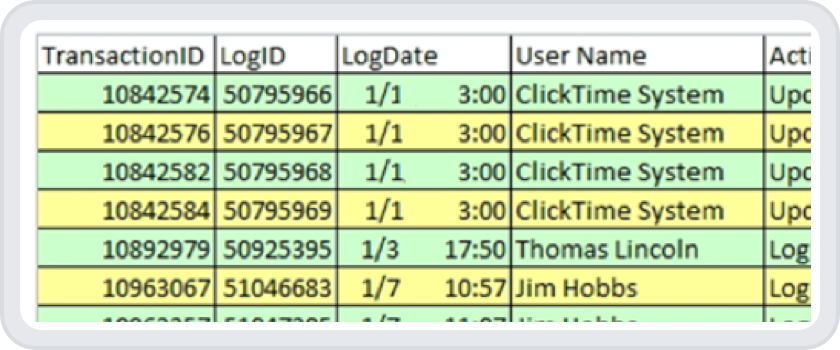
ClickTime’s built-in Audit Trail provides auditors with documentation of every time entry, timesheet submission, approval, and more. This extensive documentation helps prove where your employees truly spent their time.
Our Timesheet Attestation feature also requires employees to confirm the authenticity of their timesheets, providing auditors with additional assurance that your records are accurate and reliable. With ClickTime’s robust audit trail and authentication features, you can rest assured that your time and expense records will withstand even the most rigorous audits.
Consult with a ClickTime Expert
Tap into 24+ years of software knowledge.

ClickTime’s Customer Success team has been assisting thousands of clients since 1999. With their extensive software expertise, our team can help you efficiently track capital and operational expenditures in a manner that aligns with your goals and adheres to your preferred processes.
Our Professional Services Team is also available to assist in integrating ClickTime with your existing technology stack. And for organizations who don’t have a dedicated analyst to use our BI Tool, we can create any complex report you may require. No matter what needs to be done, our team is available to ensure you successfully document all capitalizable expenditures.
Speak with a ClickTime Expert
Get a free demo of our easy timesheets, powerful reports, and world-class support.
You May Also Be Interested in

Billable Hours vs. Non-Billable Hours: How to Get Paid fo...

Against All Odds: How Accurate Data Helps PR Firms Nail T...

Adjusting for Inflation: How to Increase Your Service Pri...
STAY UP TO DATE
ClickTime Newsletter






